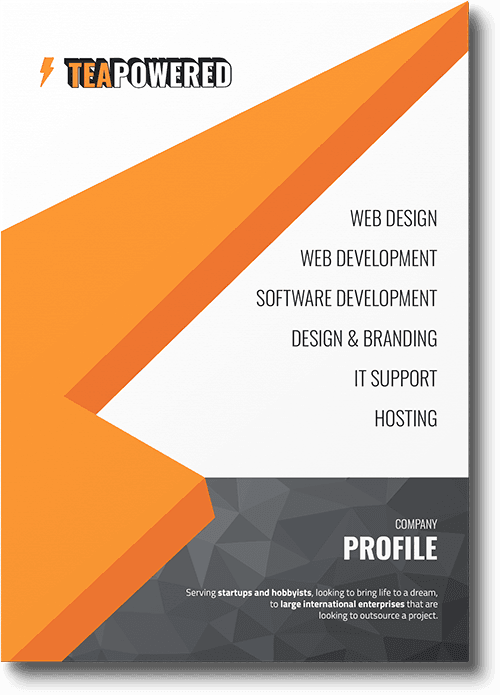Introduction to Website Terminology
Welcome to the World of the Web!
Navigating the digital landscape can be daunting, especially when bombarded with technical jargon. Whether you're a budding entrepreneur, a curious learner, or a seasoned professional, understanding website terminology is crucial in today's technology-driven world. In this comprehensive guide, we'll demystify the complex terms and concepts in web development and design, ensuring you're fluent and confident in your digital conversations.
The Basics of Web Development

HTML: The Backbone of Web Pages
Imagine a world without structure, a chaotic space where nothing makes sense. That's a web without HTML. Hypertext Markup Language (HTML) is the skeletal framework of the web. It's not just a coding language; it's the foundation that supports all web content. From the simplest blogs to the most intricate websites, HTML is the unseen hero that organises and displays content. Here's a fun fact: the web page you're reading is a symphony of HTML elements working harmoniously.
CSS: Styling the Web
If HTML is the skeleton, Cascading Style Sheets (CSS) is the fashion designer of the web. It takes the basic structure and breathes life into it with styles, colours, and layouts. CSS is what makes websites visually appealing. It's a powerful tool that speaks directly to the aesthetic sense of users. With CSS, a website can transform from a bland set of text and images to an engaging, branded experience.
JavaScript: Bringing Interactivity to Websites
Enter JavaScript, the wizard of the web world. It's the language that adds interactivity to websites. Think of those captivating animations, real-time updates, and interactive forms – that's JavaScript in action. It's what turns a static webpage into a dynamic and engaging user experience. JavaScript is the secret ingredient that keeps users coming back for more.
Website Design Essentials

User Interface (UI) vs User Experience (UX)
Diving into website design, two terms often come up: UI and UX. They're like two peas in a pod, distinct yet inseparable. User Interface (UI) is all about the layout, the buttons, the colours – the aspects of a website that you see and interact with. It's the visual appeal that catches your eye. On the other hand, User Experience (UX) delves deeper. It's about how users feel when they navigate your site. Is it intuitive? Is it enjoyable? The best websites seamlessly blend UI and UX, creating an interface that's not only beautiful but also functional.
Responsive Design: Adapting to Various Devices
In a world where people access the internet from devices of all shapes and sizes, responsive design isn't just nice to have; it's a must. Responsive design ensures that your website looks great and functions well, whether on a desktop, a tablet, or a smartphone. This adaptability improves user experience and is also a key factor in SEO rankings.
Typography and Colour Schemes in Web Design
The art of choosing the right font and colour palette might seem trivial, but in the realm of web design, it's a game-changer. Typography and colour schemes set the tone of your website. They convey emotions and values and can significantly impact user engagement. A well-chosen font and colour scheme can make your content not just readable, but memorable.
Behind the Scenes: Understanding Backend Terminology

Servers and Hosting: Where Websites Live
Every website needs a home, and that's where servers and hosting come in. Think of a server as a giant library, and your website is a book in it. Hosting is like the shelf where your book resides. In technical terms, servers are powerful computers that store website files and make them accessible to visitors online.
Databases: Organising Website Data
Databases are the brain behind your website. They store and manage data like user information, content, and preferences. Understanding databases is crucial for websites that handle a lot of user interactions and data, like e-commerce sites and social networks.
Content Management Systems (CMS): Simplifying Content Creation
Content Management Systems are the superheroes for non-techies. They make creating and managing website content a breeze. Platforms like WordPress, Joomla, and Drupal allow you to create, edit, and publish content without needing to write a single line of code. It's like having a powerful publishing tool at your fingertips.
SEO and Analytics: Measuring Website Success

SEO: Optimising for Search Engines
Search Engine Optimisation (SEO) is the magic that makes your website visible in the ocean of the internet. It's a set of practices that help your site rank higher in search engine results, bringing more traffic and visibility. SEO involves optimizing content, improving site speed, and building quality backlinks, among other tactics.
Google Analytics: Tracking User Behaviour
Understanding your audience is key to website success, and Google Analytics provides those insights. It tracks how users interact with your site – what they click, how long they stay, and what content resonates with them. This data is invaluable in making informed decisions to enhance user experience and boost engagement.
Conversion Rate Optimization (CRO): Turning Visitors into Customers
CRO is about making your site not just a place people visit, but a place where they take action. It involves tweaking your website to increase the percentage of visitors who perform a desired action, like making a purchase or signing up for a newsletter.
Emerging Trends in Web Technology
The Rise of AI in Web Development
Artificial Intelligence (AI) is no longer just a buzzword; it's reshaping web development. AI technologies like chatbots, personalized content, and automated design are enhancing user experience and efficiency.
Progressive Web Apps (PWAs): The Future of Web Applications
PWAs are the bridge between websites and mobile apps. They offer the best of both worlds: the reach of a website and the functionality of a mobile app. PWAs are fast, reliable, and engaging, making them a popular choice for businesses looking to improve their mobile presence.
Cybersecurity: Protecting Your Online Presence
As the web evolves, so do the threats. Cybersecurity is paramount in protecting your website and your users' data. Implementing robust security measures like SSL certificates, regular software updates, and secure passwords is crucial.
Conclusion
Embracing and understanding website terminology is not just for tech enthusiasts; it's a necessity in the digital age. From the basics of web development to the latest trends in technology, this knowledge empowers you to make informed decisions about your online presence. Whether you're building a personal blog or a corporate website, these insights will guide you towards creating an effective, engaging, and secure online platform.
